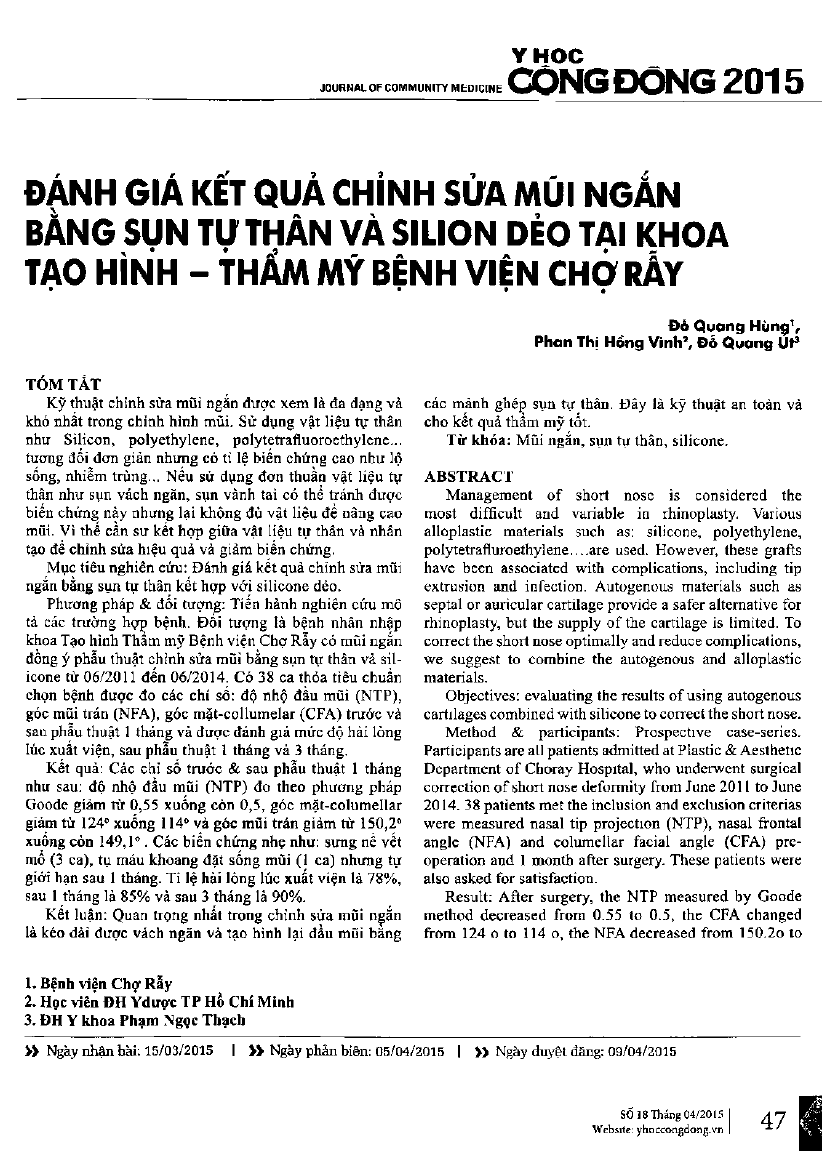
Management of short nose is considered the most difficult and variable in rhinoplasty. Various alloplastic materials such as: silicone, polyethylene, polytetrafluroethylene... are used. However, these grafts have been associated with complications, including tip extrusion and infection. Autogenous materials such as septal or auricular cartilage provide a safer alternative for rhinoplasty, but the supply of the cartilage is limited. To correct the short nose optimally and reduce complications, the authors suggest to combine the autqgenous and alloplastic materials. Objectives: evaluating the results of using autogenous cartilages combined with silicone to correct the short nose. Method and participants: Prospective case-series. Participants are all patients admitted at Plastic and Aesthetic Department of Cho Ray Hospital, who underwent surgical correction of short nose deformity from June 2011 to June 2014, 38 patients met the inclusion and exclusion criteria were measured nasal tip projection (NTP), nasal frontal angle (NFA) and columellar facial angle (CFA) pre-operation and 1 month after surgery. These patients were also asked for satisfaction. Result: After surgery, the NTP measured by Goode method decreased from 0.55 to 0.5, the CFA changed from 1240 to 1140, the NFA decreased from 150.20 to 149.10. The complications were minor, including edema (3 cases), hematoma (1 case, but self-limited after 1 month). Patient satisfaction rate was 78 percent at discharge, 85 percent after 1 month and 90 percent after 3 months. Conclusions: The key factor for correcting the short nose was using autogenous cartilage for the tip-plasty and lengthening the nose. This technique was not safe but also provided good aesthetic results.
- Đăng nhập để gửi ý kiến
